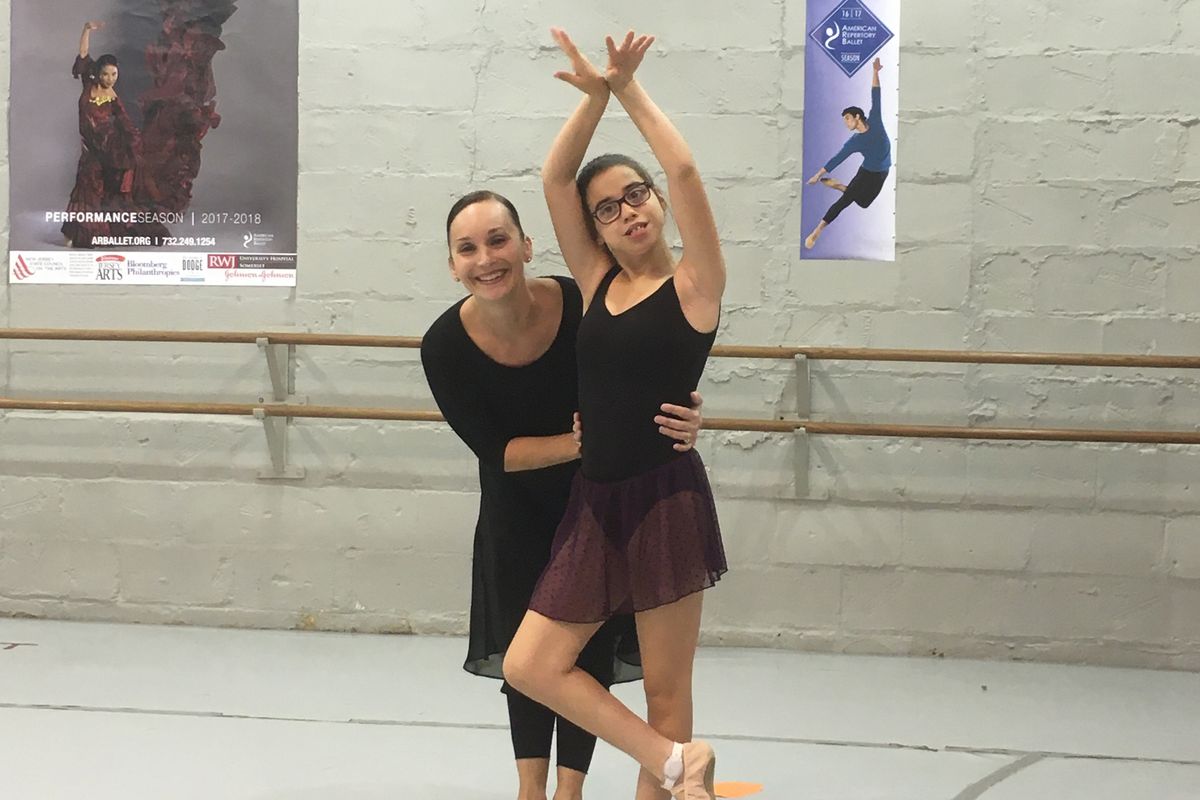
Audrey was looking at her iPad when I heard her begin to sob. My daughter’s tears flowed with more intensity as the music continued to build. What was she watching that moved her so profoundly? Looking over her shoulder, I saw that it was the final act of
Swan Lake. I was stunned by her emotional reaction to the story, particularly because her attention deficit disorder (ADD) usually prevents her from sticking with any one video for more than a minute. But here she was, thoroughly engrossed by poor Odette and her prince, Siegfried, for more than an hour.
In addition to struggling with ADD, Audrey, who is 14, is nonverbal, developmentally delayed and on the autism spectrum. Most of all, she’s passionate about ballet.

Audrey (left) at age 4 in ballet class with friends
Courtesy of Lisa Lacroce Patterson
Ballet has profound meaning for many people, but especially for anyone who communicates primarily through movement. For these special individuals like Audrey, who may be cognitively impaired and/or physically disabled, movement means everything. But finding the right way for Audrey to partake in ballet classes has not always been an easy path.
Any attentive parent wants to encourage the healthy interests of her child, and Audrey showed interest in ballet when she was very young. At 3 years old, I enrolled her in a “mommy and me” ballet class. Audrey was able to thrive in children’s ballet for several years, although not advancing as the other students did. Pretty soon, she was the oldest, and tallest, child in the class. Finally, her ballet school could not make allowances for her any longer. Though on occasion she was lucky to participate in New York City Ballet’s free workshops for children with autism, without another regular option she was left taking private lessons in our attic. While she loved these classes and the one-on-one attention she got from her teacher, they were isolating. She didn’t understand why she couldn’t take classes in the studios with other children. If we were ever near the ballet studios, it was a struggle to keep Audrey from rushing into a class and joining in.

Audrey with NYCB’s Jennifer Tinsley-Williams during a workshop for children with autism
Courtesy of Lisa Lacroce Patterson
Now, thanks to the growing desire across the country and beyond to make dance available to everyone, Audrey has graduated from classes in our attic. Schools across the world have opened their doors to dancers with disabilities, allowing students like Audrey to enjoy the important social aspect of ballet classes.
Everything changed for us last fall, when Princeton Ballet School director Aydmara Cabrera put me in touch with Valerie Amiss, a ballet teacher working to launch a pilot program for individuals with special needs. Formerly a soloist with Pennsylvania Ballet, Amiss is credited with starting a similar program at the Pennsylvania Ballet School. She also has experience working with students with Down syndrome and a wide range of disabilities at schools across Pennsylvania and New Jersey. “I do not have a degree in this, but I’ve always felt that dance has healing powers, both physically and mentally,” says Amiss.
Once we got approval to publicize the class, I worked with Cabrera and Amiss to send out emails to all of Audrey’s friends. We had an immediate and enthusiastic response, and Audrey was joined by a handful of students at the school’s Cranbury, New Jersey studios. Princeton Ballet School is now calling the program Audrey’s Class, in honor of my daughter and as a nod to the school’s founder, Audrée Estey. Audrey is thrilled to be back in a studio, dancing to live piano alongside friends and given the chance to perform.

Valerie Amiss teaches Audrey Patterson (left) and Ashley Suhocki (right) at American Repertory Ballet’s Princeton Ballet School.
Courtesy of Lisa Lacroce Patterson
“We as dancers are so in tune with our bodies, which makes us more receptive to nonverbal communication,” says Amiss. “Dance does more than just teach kids about movement and music. It builds inner strength and confidence, and teaches us how to build friendships, all using a language that’s not spoken.” Amiss is now consulting with Australia’s Queensland Ballet. She says she can’t imagine what her life would be like without these classes.
Over the past few months, I’ve been stunned by the progress that Audrey has made. Her focus, musicality, physical control and self-confidence have improved beyond what I thought possible. Though Audrey’s story is just one of thousands from children with special needs who love ballet, we’re thrilled to know that programs like the one our family has found are flourishing around the country. She and her friends bring into sharp relief the profound ways dance is a wordless yet articulate form of communication, and an important way to build a community.



